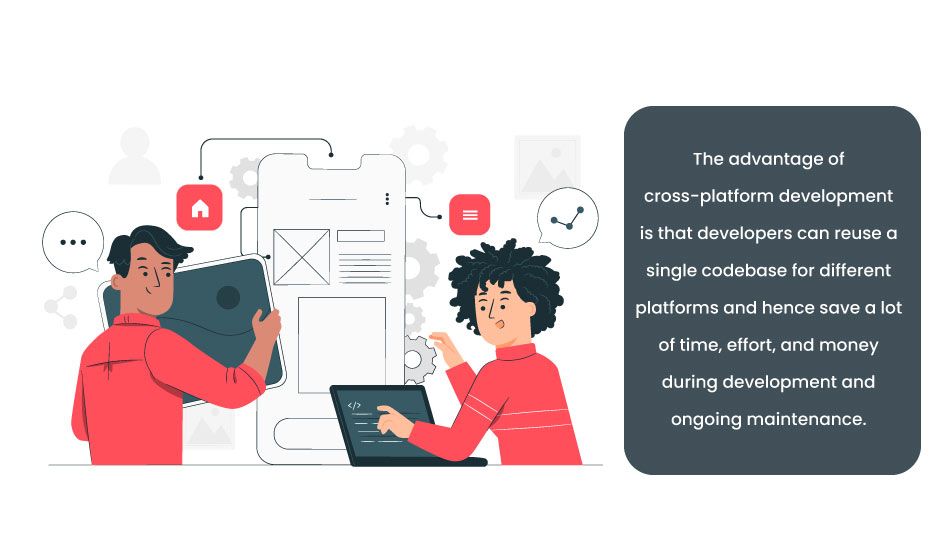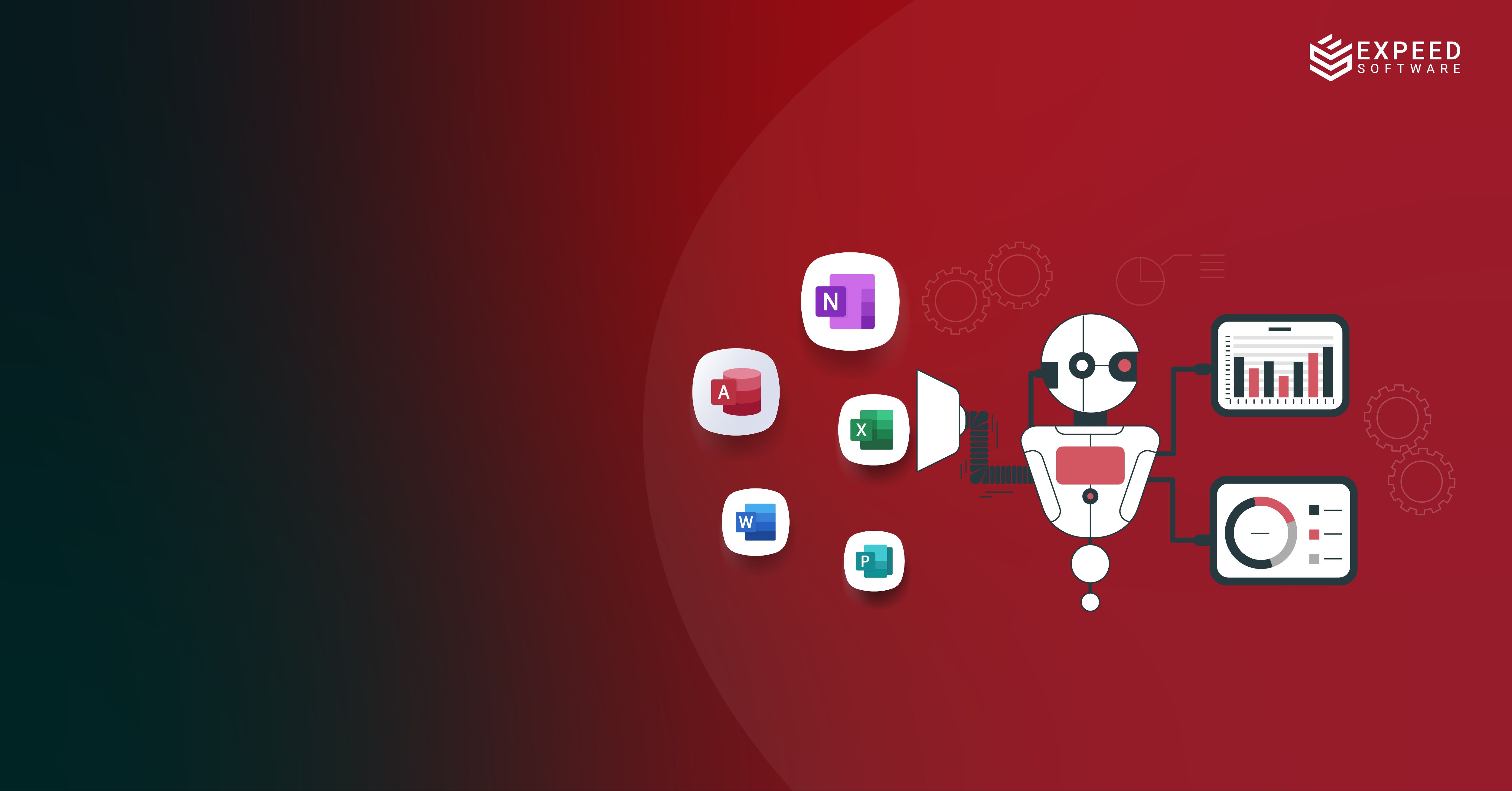There are over 6.3 billion smartphone users across the world, each one of them spending close to 88% of their phone hours on their apps. The app industry is booming and mobile apps alone are expected to generate over $935 billion in revenue by 2023. Businesses, irrespective of their industry, have partnered with mobile app development companies that can help them stay at the forefront of this digital race, convert their app ideas into fully-functional and immersive products and earn them some real user experience brownie points.
While companies try to out best themselves in the app download competition, mobile app development companies are still oscillating between native and cross-platform development approaches. A decade-old debate with still no clear winner, both development approaches have their own sets of merits and limitations. In this article, we’ll provide some guidelines for choosing cross-platform application development over native development.
Cross-Platform and Native Development
Before we begin, let’s take a quick look at how the concepts of native and cross-platform development have evolved over the years. Native apps are the ones developed for a single platform (iOS or Android), while cross-platform apps can be used across platforms and devices. The advantage of cross-platform development is that developers can reuse a single codebase for different platforms and hence save a lot of time, effort, and money during development and ongoing maintenance. On the other hand, as native apps are built exclusively for one platform, they are compiled to the native binary format of the platform thereby enabling the best possible performance for that platform. Mobile app development companies were mainly focused on native development until 2015. With the introduction of technologies like React Native, Flutter, and Xamarin, cross-platform has gone more mainstream. Unlike frameworks such as Cordova and Ionic which render applications in an embedded WebView, React Native, Xamarin and Flutter utilize native rendering techniques and provide performance very close to native applications. These performance gains and access to all accessories of the devices have given developers more reasons to sway towards cross-platform. However, native technologies have also seen impressive updates with features that offer surreal customer experiences.
Cross-Platform Development Benefits
Today, it is largely up to businesses to choose development approaches based on their specific needs and market demands. Although a powerful UI/UX is very important for all applications, it plays a slightly more important role in determining the success of some apps over others. Below are some of the main advantages associated with cross-platform development.

Good Enough Performance
Most enterprise mobile applications are used to either present data or gather data. These data-driven applications don’t need their screens to be refreshed to a higher frequency. Screen refresh rate becomes an important requirement if you are working on games, and native applications might make sense for such scenarios. As enterprise applications are mostly data-driven, cross-platform technologies with performance closely matching their native counterparts are a wiser choice.
Low-Cost Development
In comparison with native apps, developing cross-platform apps can cut your development cost by at least 30-40%. This is primarily because of the single codebase that is re-used in development. If you are targeting multiple platforms, native app development requires multiple teams, one for each platform, whereas cross-platform development requires just one team. This results in significant cost savings in terms of salaries to be paid and other overheads. As app testing and maintenance teams also need increased efforts, you are looking at shaving off thousands of dollars from resource costs if you take the cross-platform approach. In short, if your app development is constrained by budget caps, then it is better to go for cross-platform app development. Cross-platform apps will ensure maximum results with minimum investment.
Shorter Development Cycles
If you are targeting multiple platforms for your mobile application, taking a cross-platform approach would result in a shorter development cycle enabling you to go to market quickly. Broadly categorizing the various stages involved in a typical app development project there are four basic stages:
- Stage 1: App Concept and Market Research
- Stage 2: Specification and Design
- Stage 3: App Architecture and Development
- Stage 4: Testing and Launch
Stage 1 takes the same amount of time in both the native and cross-platform approaches. However, stages 2, 3, and 4 can be completed in a much shorter span of time while using cross-platform development, as developers need to design, build, test, and launch one single codebase. As multiple teams, one for each platform, would be working in native app development, it takes extra effort, collaboration, and testing in stages 2, 3, and 4 to maintain feature parity, consuming much more time and delaying the final product launch.
Quicker User Feedback and Updates
Product apps often depend heavily on market feedback. Since cross-platform apps can be released to market much sooner compared to native apps, they can easily collect market data much faster. Based on the actual user feedback, mobile app development companies can quickly work on modifying the app to better-fit customer requirements. This ultimately leads to the success of the app and business.
The Future of Cross-Platform App Development
Today we use a good mix of native and cross-platform apps in our daily lives. Apps like Spotify and WhatsApp are made in native technology whereas TeamViewer and Adobe Reader are built on cross-platform technologies. These apps serve very different functions and meet their users’ different types of expectations. Hence it is still too early to declare a winner between these two. However, cross-platform technologies are improving at a rapid pace removing any constraints and giving full access to device capabilities. Sometimes, cross-platform technologies are confused with hybrid development frameworks such as ionic that render content in an embedded WebView which results in sluggish performance and also limits access to device capabilities. As an example of innovation taking place on the cross-platform side, Microsoft is revamping Xamarin with .NET MAUI making it even further for developers with .NET experience. And as the industry learns more and more about the capabilities of cross-platform technologies, native technologies may take a backstage at some point. But until then, native apps will continue to stay relevant with exceptional app performances and user experiences.
Cross-Platform Development at Expeed Software
As one of the leading mobile app development companies in Ohio, Expeed has a very strong cross-platform development team, that has built robust mobile applications for clients worldwide. Our teams specialize in React Native development and Xamarin development that offer a ‘close-to-native’ UX. Our cross-platform apps have allowed businesses to save costs and resources while offering a quick deployment across Android and iOS platforms.

Expeed Software is a global software company specializing in application development, data analytics, digital transformation services, and user experience solutions. As an organization, we have worked with some of the largest companies in the world, helping them build custom software products, automate processes, drive digital transformation, and become more data-driven enterprises. Our focus is on delivering products and solutions that enhance efficiency, reduce costs, and offer scalability.


